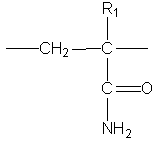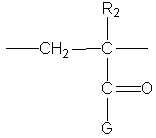Methods for improving membrane bioreactor systems
A membrane bioreactor, ultrafilter technology, applied in chemical instruments and methods, sustainable biological treatment, biological water/sewage treatment, etc., can solve problems such as increasing sludge concentration, reduce costs, and improve MBR efficiency. Effect
- Summary
- Abstract
- Description
- Claims
- Application Information
AI Technical Summary
Problems solved by technology
Method used
Image
Examples
Embodiment 1
[0064] The mixed liquor samples used for testing in Examples 1-3 were taken from the municipal wastewater treatment facility of GE China Technology Center. Samples were taken from activated sludge recirculation lines where the MLSS concentration exceeded 10 g / L.
[0065] Each test sample and control sample were tested using a bottle tester (Jar Tester, Phipps & Bird TM) standard bottle test to ensure proper mixing. Four 500 ml aliquots of the mixture were added to four bottles. The treatment additive (Polymer A or Polymer B) was quickly added to each sample in the amount indicated in Table 1. A control sample was also prepared by adding 500 ml of the mixture to a control bottle without adding treatment additives. All samples were agitated rapidly at 200 rpm for 30 seconds followed by slow agitation at 50 rpm for 15 minutes to thoroughly mix the samples.
[0066] The filterability of the mixture of each sample (including the control bottle) was evaluated by the time versus ...
Embodiment 2
[0073] Each of the following test samples and control samples were tested using a bottle tester (Phipps & Bird TM ) standard bottle test to ensure proper mixing. Five 500 ml aliquots of the mixture were added to five bottles. The treatment additives shown in Table 2 were added to each sample. A control sample was also prepared by adding 500 ml of the mixture to a control bottle without adding treatment additives. All samples were agitated rapidly at 200 rpm for 30 seconds followed by slow agitation at 50 rpm for 15 minutes to thoroughly mix the samples.
[0074] The filterability of the mixed liquor of each sample (including the control bottle) was evaluated by the TTF test method as described in Example 1. 200 ml samples from each treated mixture sample and control bottle were added to separate Buchner funnels. A vacuum pressure of 51 kPa (15 inches Hg) was applied using a vacuum pump with a pressure regulator. The time required to filter 100 ml (or 50% of the initial sa...
Embodiment 3
[0081] Each of the following test samples and control samples were tested using a bottle tester (Phipps & Bird TM ) standard bottle test to ensure proper mixing. Six 500 ml aliquots of the mixture were added to six vials. The treatment additives shown in Table 3 were quickly added to each test sample. A control sample was also prepared by adding 500 ml of the mixture to a control bottle without adding treatment additives. All samples were agitated rapidly at 200 rpm for 30 seconds followed by slow agitation at 50 rpm for 15 minutes to thoroughly mix the samples.
[0082] The filterability of the mixed liquor of each sample (including the control bottle) was evaluated by the TTF test method as described in Example 1. 200 ml samples from each treated mixture sample and control bottle were added to separate Buchner funnels. A vacuum pressure of 51 kPa (15 inches Hg) was applied using a vacuum pump with a pressure regulator. The time required to filter 100 ml (or 50% of the i...
PUM
 Login to View More
Login to View More Abstract
Description
Claims
Application Information
 Login to View More
Login to View More - R&D
- Intellectual Property
- Life Sciences
- Materials
- Tech Scout
- Unparalleled Data Quality
- Higher Quality Content
- 60% Fewer Hallucinations
Browse by: Latest US Patents, China's latest patents, Technical Efficacy Thesaurus, Application Domain, Technology Topic, Popular Technical Reports.
© 2025 PatSnap. All rights reserved.Legal|Privacy policy|Modern Slavery Act Transparency Statement|Sitemap|About US| Contact US: help@patsnap.com



